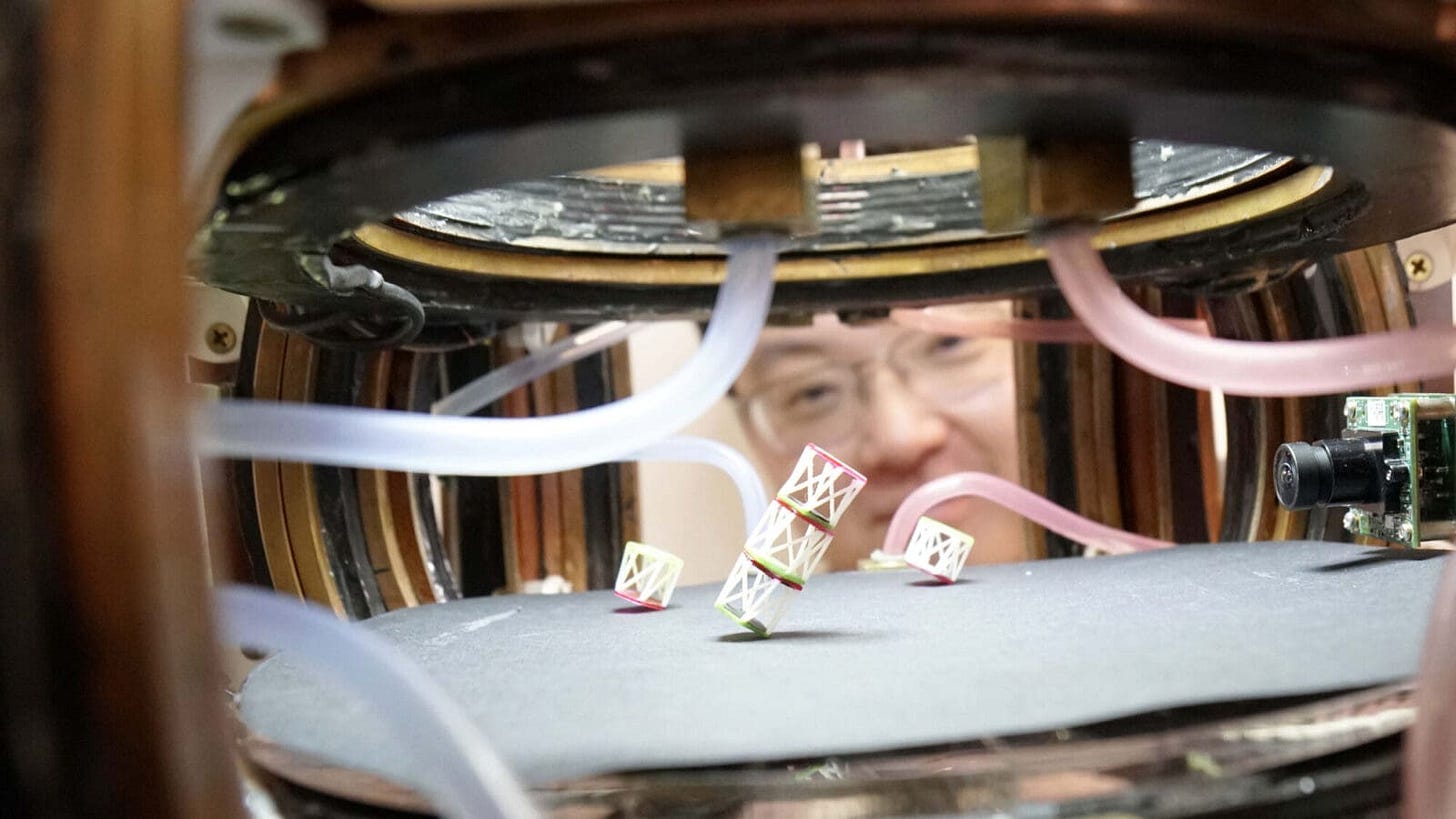Princeton's Metabot: Part Robot, Part Origami?
Imagine a material that can twist, shrink, and move—all without motors. Princeton’s engineers made it possible!
Hey friends,
Recently, I came across an article about some origami, but then realized it was part robot!
Image Credit: Princeton Engineering
Imagine a material that can twist, shrink, and move—all without motors. Sounds like science fiction, right? But researchers at Princeton University have made it a reality with their latest invention: the “metabot.”
So what is it?
The metabot is a type of metamaterial, which means its unique properties come from its structure rather than its composition. Inspired by the art of origami, the team designed the metabot using patterns known as Kresling tubes. These are geometric shapes that twist when compressed and compress when twisted. By connecting two mirror-image Kresling tubes, they created a single unit that can fold in complex ways.
What makes the metabot truly remarkable is its ability to move without any internal motors or gears. Instead, it responds to external magnetic fields! By applying these fields, researchers can make the metabot expand, contract, twist, or even crawl—all remotely. This is possible because the electromagnetic fields deliver both power and control signals simultaneously, allowing for precise and instantaneous movements.
The metabot's modular design, consisting of many reconfigurable unit cells, allows for complex behaviors. Each unit can be individually controlled, enabling the metabot to perform intricate movements. This design also introduces a property called chirality, where the mirror-image sections allow for asymmetric responses. For example, twisting the metabot in one sequence might cause it to collapse, while reversing the sequence leads to a different deformation. This behavior, known as hysteresis, and is valuable for simulating complex systems in physics and engineering!
In the real world?
Beyond its fascinating mechanics, the metabot has potential applications in various fields.
In medicine, microscopic versions of metabots could navigate the human body to deliver drugs or assist in surgeries. The team has already created prototypes as small as 100 microns—about the thickness of a human hair!
Additionally, the metabot can act as a thermoregulator by switching between light-absorbing and reflective surfaces, adjusting its temperature from 27°C to 70°C under sunlight. This capability could be useful in energy-efficient building materials or adaptive clothing.
The metabot represents a fusion of materials science, origami, and robotics. It's a glimpse into a future where materials themselves can adapt and respond to their environment!
What do you think?
Keep learning,
Suhana.




